Telefunken M16 and Apex 460 Comparison
Originally published here: http://www.studioreviews.com/m16-460.htm; rescued from Internet obscurity 2010-05-30.
EDITOR’S NOTE: November 2006 This comparison was for the original Telefunken USA M16. Telefunken USA has since done some major modifications and introduced the M16 MkII as well as the AK47. We’ve had these mics here for testing and are absolutely impressed. Read the new reviews of the M16 Mk II and AK47 tube microphones.
R-F-T Telefunken M16 and Apex 460
by Dan Richards; published May, 2005
Included here are the initial results of our bench tests of an R-F-T Telefunken M16 and an Apex 460. These are both multi-pattern tube microphones currently available on the market. The M16 sells for around $1399. The 460 sells for around $229. In all the images available here, the M16 is on the left and the 460 is on the right. All images are clickable and link to large image files that are bandwidth intensive.
Based on tests, which include observations by an independent electrical engineer as well as response sweeps on a Gold Line TEF workstation:
- Capsules are identical in every detail. They have not been touched. [see paint on the screws]
- Circuit boards appear to be identical with the same parts except for 3 high-value resistors on the M16 that are a different brand. This should make no difference.
- Wiring is the same and looks not to have been touched.
- The output transformer is made in China and shows very poor phase response.
- The overall build quality appears to be the same in every detail except the plating and paint.
- Frequency response is nearly identical with the M16 having less low end almost 5dB less at 40Hz that is 5dB less than flat.
- Noise floor in the two microphones is not the same. The NOS Philips tube in the M16 having 12dB more noise. The tube from China in the 460 is superior with less noise.
- Phase response of both systems is nearly identical except for the inferior low frequency response of the M16.
- Power supplies for both mics appear to be identical.
Conclusion of an independent lab: “My opinion is that the Telefunken M16 and the Apex 460 are the same microphone with cosmetics being the major change.”
The next phase in the comparisons will be A/B and real-world recording sessions, and include performance observations as well as online soundfile samples. The Listening Sessions is currently testing and recording large condenser tube microphones. Soundfiles will be released on 24-bit WAV DVD and 16-bit CD.
For more information on these products visit:
www.rftfunkwerk.com
www.apexelectronics.com
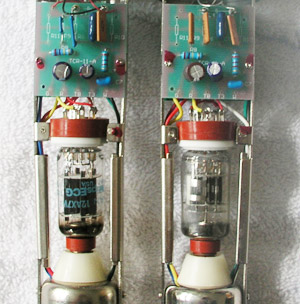


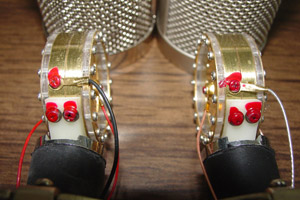
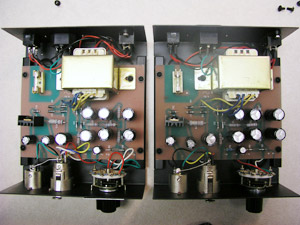

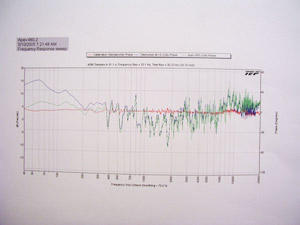
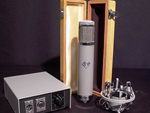
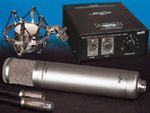
Jack Hicks
September 10th, 2011 at 6:50 am
Even though significant improvements were made to this microphone, it was only after they were “outed.” The fact that they would pull such a stunt to begin with has taken Telefunken off of my radar.
matthew mcglynn
September 10th, 2011 at 7:42 am
@Jack, I think that’s a bit shortsighted. This episode is ancient history. Telefunken has invested a mint in reproducing exquisite vintage mics since then, as well as some compelling original designs; they absolutely deserve a listen.
Lots of contemporary mic companies used to import catalog mics from China and resell them as originals — the only difference was the paint job and the badge. Nearly all those companies have since gone upscale, and are producing innovative products today.
Listening with our ears instead of our biases is a challenge for all of us! But so so worth it.
Lance Boyle
June 28th, 2012 at 4:20 pm
Sorry, Matthew. Once a con, always a con. I’ll never trust Telefunken again. There are similar and superior mics available from companies that have proven their trustworthiness.
matthew mcglynn
June 28th, 2012 at 5:40 pm
@Lance, there are certainly a lot of mics to choose from.
But I’d sure hate it if the world judged me by one of my (numerous) missteps.
Martin
July 31st, 2012 at 7:00 am
Even though, @matthew, you are right when pointing out that Telefunken is not the only “serious” producer that has put their logo on a cheap made-on-commision-in-the-far-east-product, @Jack & @Lance certainly reacts the way we consumers should do.
Fact is that this is NOT ancient history. Telefunken has existed for 109 years. Telefunken USA started up in 2001, not because sound engineers were whipping their skin off outside Telefunken’s headquarter in Germany – demanding they re-produce the ELA M 251, but because some Wall Street Journ.-journalist wrote an article about buying old ones for investments reasons.
It took Telefunken USA 4 years to decide to increase turnover by putting their name on a cheap product produced in China. That’s 7 year old ancient history.
After they were ‘outed’ they first tried to lie (capsules were made in Europe, specially selected parts mostly put together in the US), but soon realised their mistakes and made an MK II of the China-mic and put their legal team on a deleting quest on the internet. It is quite amusing reading blogs about this “controversy” today, as many of the links provided by posters back then – pointing to information about this scam – are erradicated from the WWW. Threads have disappeared from Gearslutz etc… It’s the power of true capitalism.
The real problem is that the sound-business is ridden with a tantalizing blend of snake-oil vendors, gullible diciples of the Religion of Gear and internet homerecording amateurs who will re-post dubious half-truths about anything, especially when defending sucky gear they’ve bought.
In an ideal world anyone who has spent some time in a real recording studio (not uncle Martys all-purpose cellar) will know that there are no “the best” when it comes to sound. There are different microphones for different instruments, performers, room-conditions etc. If the only issue was to capture sound in order to reproduce it most accurately, then all mics would be flat-curved, neutral performers. The fact is that microphones, in many respects, are musical instruments. They will shape, color, enhance, compress and distort any source of sound, and in the end – truth is in the ear of the beholder.
If, theoretically, Neumann produced a mic that made Homer Simpson sound like Luciano Pavarotti – it wouldn’t be the best mic in the world (most of us would sound VERY weird through it, I guess) – but it would certainly be best mic for Homer Simpson (if you asked any operaloving cartoon hater).
As for subjectivity, in my experience, the VAST majority of real day(&night) working professional studioengineers – most of whom do NOT discuss gear on internet blogs – are completely aware of these facts. In their studios you’ll find a large range of mics, from the very cheap to the very expensive. They will choose mics based on a lot of variables. “What do I think sounds the best?” “What does the artist think?” “What does the producer think?” “What does Yoko Ono think?” “What other instruments/vox are in the mix? Even “who’s buying the music?” “Are we going for grand dynamics, or is this to be compressed to tight-ass pulp for radio?”
Fact is that the talent in front of the mic still is what really matters. And obviously the talent behind the mic, the engineers and the producers matter a great deal too. The Beatles would not have sounded like they
Martin
July 31st, 2012 at 8:55 am
(continued) …did without George Martin. What kind of Neumanns they used is of rather subsumable importance.
Professional recording studios will over time accumulate a lot of gear. Some will be put to use often, some will gather dust only to be plugged in for that “nothing-else-really-works” moment. The expensive mics off course do sound good, but to most engineers I believe consistensy is at least just as important. Most high-end mics are built to tight specs in a high QC facility. This means that the assistant can pop out in a lunch break and buy an extra 3600$ U87 (if business is good;) and the engineer/producer will put it to use, knowing what to expect. It does however not mean that there are not several other mics that won’t work (differently yet) equally well. In fact, even though the Germans are known for their high Q control in producing high end audio gear, the U87 is infact not as “accurate” as many cheaper asian-produced mics. It is quite off-axis and will behave rather strangely if used at a distance. In fact, for close mic’ing vocals, a two inch variation in distance will produce different sound specs.
I have yet to meet an engineer who can listen to a track from an unfamiliar album and know wether the piano is mic’ed up with AKG C414’s or 4033’s. There are of course engineers claiming to have golden ears – being able to distinguish between power chords of different make etc, but until these “sound gurus” accept taking part in blind testing gear and prove their ears, I’m gonna call their bluff.
Still, even if the bullshit’o’meter peaks at red in the recording blogosphere every now and again, it is not as bad as within the “HIFI-community”, where people actually believe in quantum purification of sound (check out Bybee and have a laugh/cry). As a parallell to the Telefunken/APEX 460 controversy, there is a similar story in the HIFI-world. The swiss luxury stereo component producer Goldmund released a 9500$ DVD player placing a 100$ Pioneer dv-300 inside their own “high end” chassis. Suddenly all the 200 000$ worth of HIFI gear who posted pictures of themselves fondeling their gear with white gloves on different blogs had to rationalize their spendings. It’s still funny to read some of the threads that followed the Goldmund scam.
We consumers don’t have much power other than NOT buying from those trying to fuck us over. We should use that power. If a chinese mic-producer makes a condenser mic that actually m e a s u r e s out identically to a high-end manufacturers model, then we should not only choose the cheaper one – we should in fact actively make the community aware of this. In the long run, this will lead to better and cheaper gear for everyone.
If Telefunken actually spent 40% of their turnover to develop new designs, it would at least make a little sense to spend more on their products than their competition. But the fact is that retro-engineering an old mic design is not rocket science – even though it includes a touching story of salvaging the remains of Joni Mitchells favourite ELA M251 mic. My guess is that Telefunken covered their expenses within a year. And besides, the Tele’ m16 whas NOT even a Telefunken design to begin with.
The theory behind a condenser mic has’nt changed a lot the last 50 years. But production technology has. It’s become much better. This basically means that the high end stuff will NOT become much “better”, only cheaper to produce. That is why the high end producers still earns most of their dough from re-releasing mics with 50 years old technology or doing subtle changes to existing designs in “new” mics. It also means that mass producing a fairly decent mic has never been cheaper.
Martin
July 31st, 2012 at 9:27 am
OH! and.. Thanks for making this excellent site!! It’s a true counterweight to the somtimes endless stream of subjectivism found elswhere on the web. Thanks, Matt!
Jocelyn Bouchard
May 7th, 2013 at 9:54 am
@Martin: Agree with you all along.
I would also suggest that when we buy cheap mics made by poeple living in near-slaves conditions, we should consider how we harm them, and how we harm us in the long term. American an European economics are going down mostly because we fell in the attractive low cost trap and buy things from companies that want our money, no matter at what is the long term cost.
It also has a real impact on quality. For may products, well educated and treated employees (still moslty in occident – for how long?) do a better job than extenuated un-specialized cheap labor.
I think this is particularly true for microphone manufacturing. I do record music on a daily basis for a living, and I realised that my cheap mics almost all end up in the last drawer. They do sound cheap, and they are not allways reliable. I end up not using them because I don’t wan’t to exchange a mic because of a suddent noise etc.
Sean
May 20th, 2014 at 1:49 am
Hmmm. . . “near slave” conditions. Well, I live here in Ningbo (I’m an American, not in the electronics business), where the mic in question is made; and I don’t think you’d find many Chinese people here who think that they are “near slaves.” The per capita GDP here in eastern Zhejiang province is around $1,000 a month, and things, in general, are cheaper. (For example, I can buy a pretty good lunch for around $2.00.) I’d say the standard of living here is pretty close to what you’ll find in some parts of the US — e.g., rural Mississippi. I’ve visited a factory here, and the working conditions were fairly similar to what you’d see in the US (except for the ventilation, which was bad and was a real problem, though working conditions in US factories aren’t perfect either, as I can attest from personal observations).
This doesn’t make Ningbo Santa Cruz, California, by a long shot, but whatever your impressions of China are, I don’t think they’re matched all that well by the reality of this province. I have nothing to say about conditions elsewhere, but if you ever have the time to come visit us here in Zhejiang, I think you’ll find it doesn’t match your current views about how people here are living. You don’t see people starving, you don’t see people living in filth on the street, and you don’t see people abandoned by their families. Those are, however, all things you will see in Chicago, San Francisco, and Houston.
dave thomas
November 15th, 2014 at 2:22 pm
Thanks Sean, for pointing that out. I was just in Shanghai last February working with the microphone lab there on our new CM1084, CM251 and CM49 builds.
They are very welcoming and willing to work with us on making circuit, capsule and metalwork improvements. The expertise we brought to the table was well respected by the Chinese engineering and production team.
The deposable income of the average Chinese worker seemed higher than in North America. Shanghai has a population of 30M people the population of Canada in one City. We saw no homeless people and when we asked our interpreter about “the homeless” she did not understand the term homeless.
We were told if someone is found wandering or passed out on the streets they are taken to a shelter and their families called if the family does not come and rescue the person the family is fined.
Interestingly, when we visited the metalwork factory in the outskirts of Shanghai which was a full city block square we found 80% of the worlds microphone bodies were manufactured in this one factory.
We were eating a Shanghai version of crepes for breakfast for 80 cents each.
We saw the factory bringing lunch for the workers and what impressed us the most was the skill level of the workers and how quickly they produced products. They all seemed very happy to be assembling our microphones.
Cheers, Dave
Mark Cohen
June 6th, 2015 at 8:21 am
I’m not surprised that a respected microphone company would sell re-branded mics from China (as Matt has stated above). But they charged $1399 for it! If I had bought one at that price later to find out it was essentially a $299 Apex 460 that said Telefunken on it, I’d feel like I’d been swindled.
dirk
December 24th, 2015 at 5:32 am
We made the test in June 2007.
Telefunken M16 vs Apex 460 (by in 2006). The Sound is the same, exactly …. 100%
But, is the old Apex 460 the same mic as the new one??
I think the Apex microphone 460 was modified. I’m not sure, is the new Apex 460 (2015) the same, as the Apex in this test?
Christian Falk
December 26th, 2015 at 6:40 am
The “Studio Reviews” site ran a lab test comparing the Apex 460 to the Telefunken R-F-T M16 (around $1400) and found they are the exact same microphone !!!
The only difference: cosmetics and price.
Nady and a few other companies have also marketed this product. It’s absolutely astounding that a mic this good can be had for so little money. One suggestion: Replace the stock tube in the Apex with a 6072. It’ll make a significant difference. See the test results at: http://www.studioreviews.com/m16-460.htm
fix
December 28th, 2020 at 11:13 pm
amazing. about china, i can’t believe what i read.
China is one of the worst democracy on earth. people won’t talk, say they not understand.
also selling food for $.8 written before. it’s poor people, very poor, far from western living conditions.
except a few mostly european brands, and maybe not for long, almost everything is done is china nowadays. and with quite good quality. high end brands of microphones do that. evidences everywhere. china stuff is also less and less cheap
hey, they learnt, copy, and improve now.
so, what to do. keep eyes open and not blurred, at least.